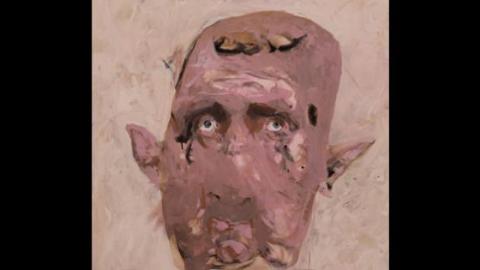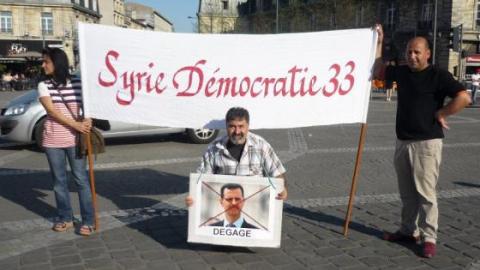When Syrians took to the streets in March 2011, the regime reacted by calling demonstrators “rioters”, “infiltrated agents“ and “terrorists”. By insulting and delegitimizing protesters, it tried to deny the fact that a popular uprising had began in the country. Syrians reacted to this denial with the sense of humor and irony that they have become known for, appointing themselves as representatives of the “rioters” and “trouble-makers” in songs, drawings and other creative and artistic manifestations. Such creativity and dark humor as resistance tools were captured by Syrian artist Monif Ajaj, whose first exhibition in Dubai was called “The Infiltrated.”
Born in the city of Deir ez-Zor - located in eastern Syria - in 1967, Monif Ajaj completed his art studies between Belarus and Damascus. He was among the first artists to depict street activism in his paintings in 2011, together with the regime’s brutal reaction to it. Walls covered with graffiti, shabbiha (regime thugs) beating demonstrators, crushing their heads, and laughing at their demands with slogans such as “Fuck your freedom”, are some of the images that can be seen through Ajaj’s work.

Some of his older pieces had not been published until recently, for fear of the repercussions against him and his family, as the artist explained to Syria Untold. One such painting shows the face of the Syrian dictator in a disfigured, grotesque light.
Bashar al-Assad is present in several of Ajaj’s paintings, both directly and indirectly. One of his pieces depicts “the parted dictators” - Ben Ali, Mubarak, Gaddafi and Ali Saleh, the four of them naked - with a message that reads “Sorry, we thought you were as crazy as we are,” in a clear reference to the dictator missing in the painting.
In 2009, at a time when addressing the issues of prison, detention and torture entailed huge risks, he presented an exhibition in Amman, Jordan, under the title “Moments before mourning”. It included striking depictions of scenes of screaming, torture and humiliation of prisoners, in his very personal style.
Such scenes were also present in his Damascus exhibition in 2010, dominated by depictions of violence and soldiers in camouflage uniforms. These themes became more and more present in his art. Much of his later work revolved around the army’s khaki uniforms as if in a desperate effort to hasten its own downfall and to announce a civil state devoid of the military’s influence.

In 2012, Ajaj managed to arrive in France. In his own words, since then he has been “devoting all of his time and energy to Syria and the uprising,” both through his own exhibitions and in collaboration with other artists such as Ahmad al-Ali, Walid al-Masri, Tamam Azzam, Walaa Dakkak, and Mohammad Omran.
The work of Ajaj before the uprising reflects the terror dominating Syrians, their humiliation and submission to the tyrants who ruled the country for decades. Since March 2011, his paintings depict the hope, courage, pain and brutality that lie in the distance between tyranny and freedom.



